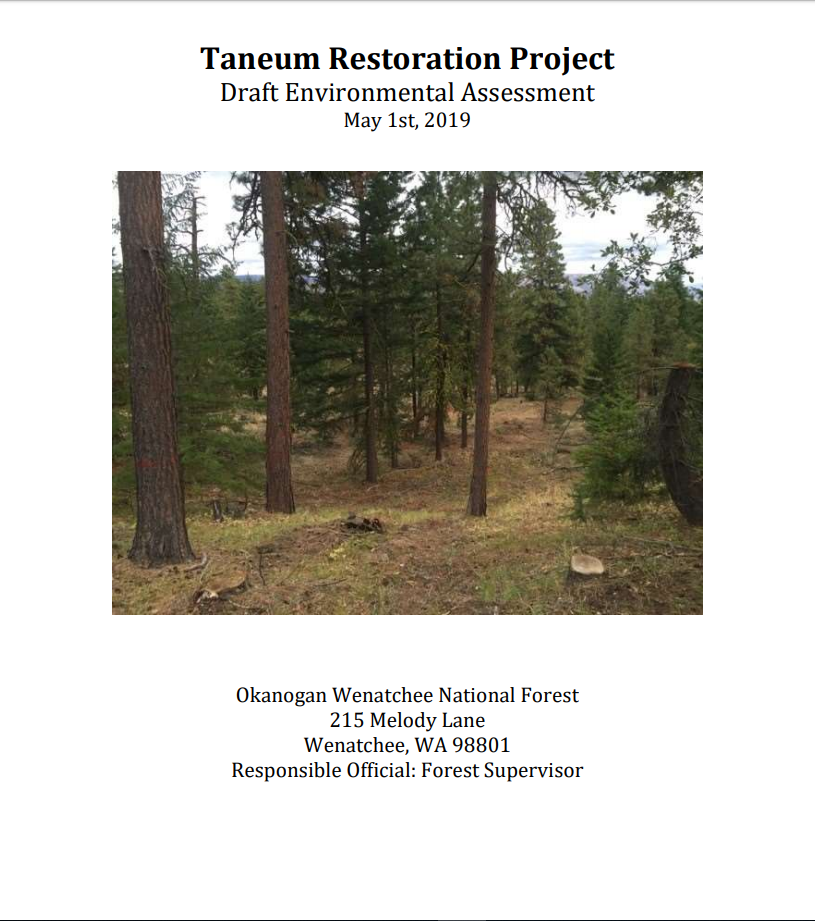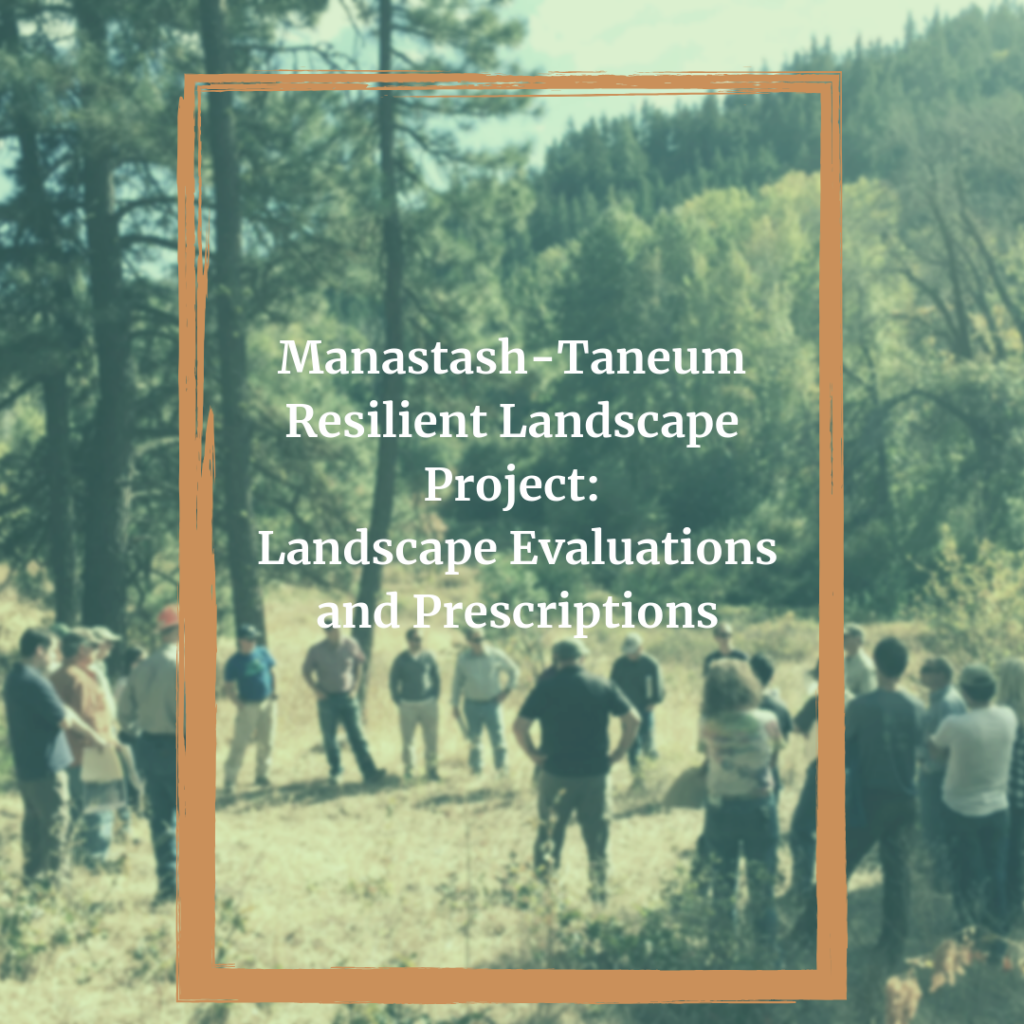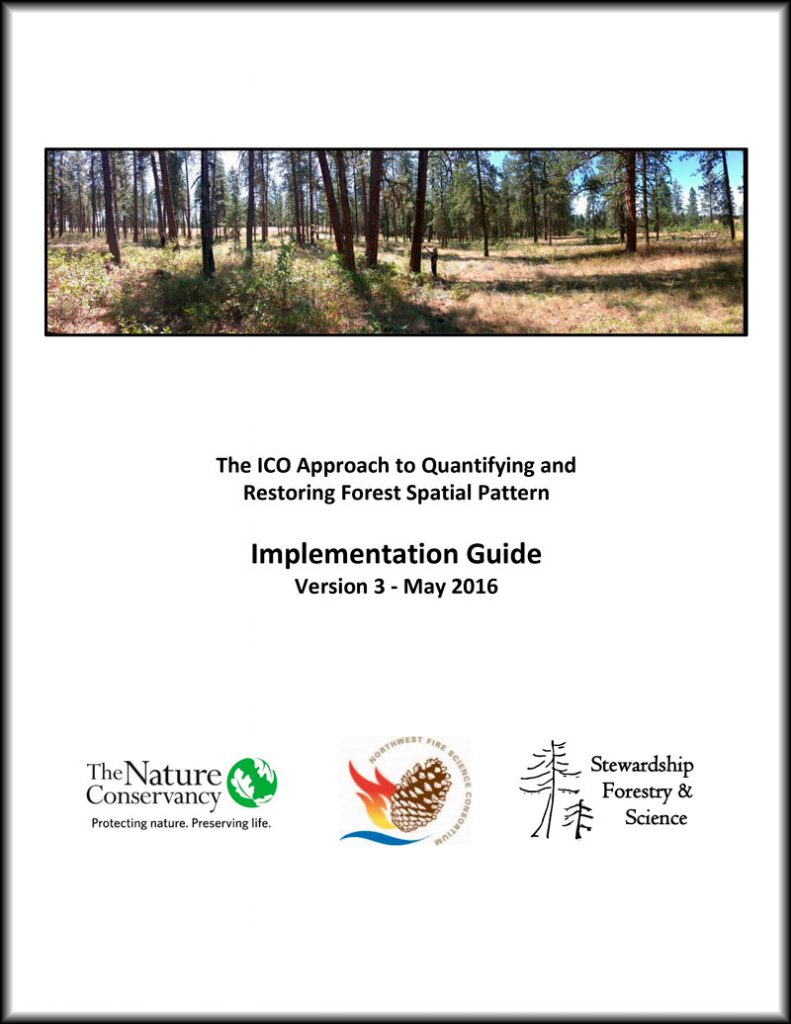
Throughout the western United States, including Washington State, forest health has been in decline for several decades. At a broad scale, the decline can be attributed to past management practices, including past fire management practices, that have resulted in uncharacteristically overstocked forests; and episodic droughts that have increased the competition among trees for available moisture, resulting in increased stress and loss of vigor.

Building upon decades of research, ecologists and land managers now understand the importance of working at landscape scales for the management of resilient ecosystems (Crow and Gustafson 1997, White and Harrod 1997, Reiman et al. 2010, Luce et al. 2012, Hessburg et al 2015). While terrestrial landscape evaluation tools are becoming well‐ developed (e.g., Hessburg et al. 2013, USDA Forest Service 2012), an integrated landscape evaluation approach that considers a broad suite of both terrestrial and aquatic ecosystem services and resource values is needed (Day et al. 2009). Rieman et al.

This document is intended as a “How To” guide for managers and stakeholders wishing to implement the Individual, Clumps, and Openings (ICO) method for silvicultural prescriptions and/or monitoring. This guide has two companion papers that we strongly recommend reading. The scientific basis for the method is established in Larson and Churchill (2012). An operational case study was conducted in 2009- 2011 and is presented in Churchill et al. (2013a). In addition, we have incorporated the ICO method into a larger framework for dry forest restoration in a new field guide (Franklin et al. 2013). Finally, the ICO method is still evolving, and this document will be updated again.
Widespread habitat degradation and uncharacteristic fire, insect, and disease outbreaks in forests across the western United States have led to highly publicized calls to increase the pace and scale of forest restoration. Despite these calls, we frequently lack a comprehensive understanding of forest restoration needs. In this study we demonstrate a new approach for evaluating where, how much, and what types of restoration are needed to move present day landscape scale forest structure towards a Natural Range of Variability (NRV) across eastern Washington, eastern Oregon, and southwestern Oregon. Our approach builds on the conceptual framework of the LANDFIRE and Fire Regime Condition Class programs. Washington–Oregon specific datasets are used to assess the need for changes to current forest structure resulting from disturbance and/or succession at watershed and regional scales
TSS Consultants was retained by the RC&D to conduct a woody biomass market analysis to determine current and potential woody biomass material availability trends within the target study area (TSA) (Figure 1 below). The primary objectives for the assessment include: Determination of the current biomass availability and pricing trends of the woody biomass market that includes existing wood manufacturing residues, urban wood waste, agricultural byproducts, short rotation woody crops, and forest-sourced wood waste (public and private timber harvests, thinning and hazardous fuel reduction projects), development of a competition analysis noting where available biomass is currently dedicated to competing plants and/or competing uses, determination of prospective locations for value-added utilization facilities, and identification of future biomass supply sources and risks.
To restore forest sustainability and resiliency, the OWNF needs to substantially increase its restoration footprint, reach across boundaries through collaborative efforts, better integrate across disciplines to accomplish multiple objectives, and adapt to changing conditions and new science. To this end, the OWNF developed the Forest Restoration Strategy (Restoration Strategy). The Restoration Strategy described in this document is our method for implementing our “Restoration Vision” (page 1 of this document). The Restoration Strategy first describes the scientific basis for restoration needs and objectives (Chapter 1). Second, it outlines our approach to an integrated Landscape Evaluation of forest resources to set the context and priorities for restoration treatments (Chapter 2). Finally, it describes our plan for monitoring and adaptive management (Chapter 3). The appendices provide additional specifics on land use allocations (Appendix A), silvicultural treatments (Appendix B), and updates to the Strategy currently in progress (Appendix C).
Presentation by James K. Agee, University of Washington as part of the Dry Forest II Workshop, in Wenatchee, Washington May 2007.
A large block of private commercial timber land held in checkerboard pattern within the Naches Ranger District of the Okanogan and Wenatchee National Forest was put up for sale. The Nature Conservancy (TNC), working with agency, tribal and other non-profit partners, optioned the 10,400-acre property and raised enough public funds to transfer it to the Washington State Department of Fish and Wildlife (WDFW). This solved the imminent threat of private development, but the challenge of multiple agency ownership and cross boundary management remained. There was an agreed upon need to collaborate to build a multi-organizational landscape scale framework to manage fire and other key natural processes, to allow them to resume their functional roles. TNC offered the CAP framework to help partners develop and realize shared objectives across the Tieton landscape.
A large block of private commercial timber land held in checkerboard pattern within the Naches Ranger District of the Okanogan and Wenatchee National Forest was put up for sale. The Nature Conservancy (TNC), working with agency, tribal and other non-profit partners, optioned the 10,400-acre property and raised enough public funds to transfer it to the Washington State Department of Fish and Wildlife (WDFW). This solved the imminent threat of private development, but the challenge of multiple agency ownership and cross boundary management remained. There was an agreed upon need to collaborate to build a multi-organizational landscape scale framework to manage fire and other key natural processes, to allow them to resume their functional roles. TNC offered the CAP framework to help partners develop and realize shared objectives across the Tieton landscape.
Presentation by The Nature Conservancy discussing the role of communities in Restoring Fire as a Natural Process.
Seattle P-I article “…These provide aeries for golden eagles, spires for rock climbers, prime habitat for bighorn sheep, a scenic setting for hikers and campers and a dramatic backdrop for stunning spring wildflower displays. You now are assured of experiencing much of it in its natural state, unfettered by development, thanks to a four-year effort to preserve and add 10,000 acres of private land to the state’s Oak Creek Wildlife Area ”
